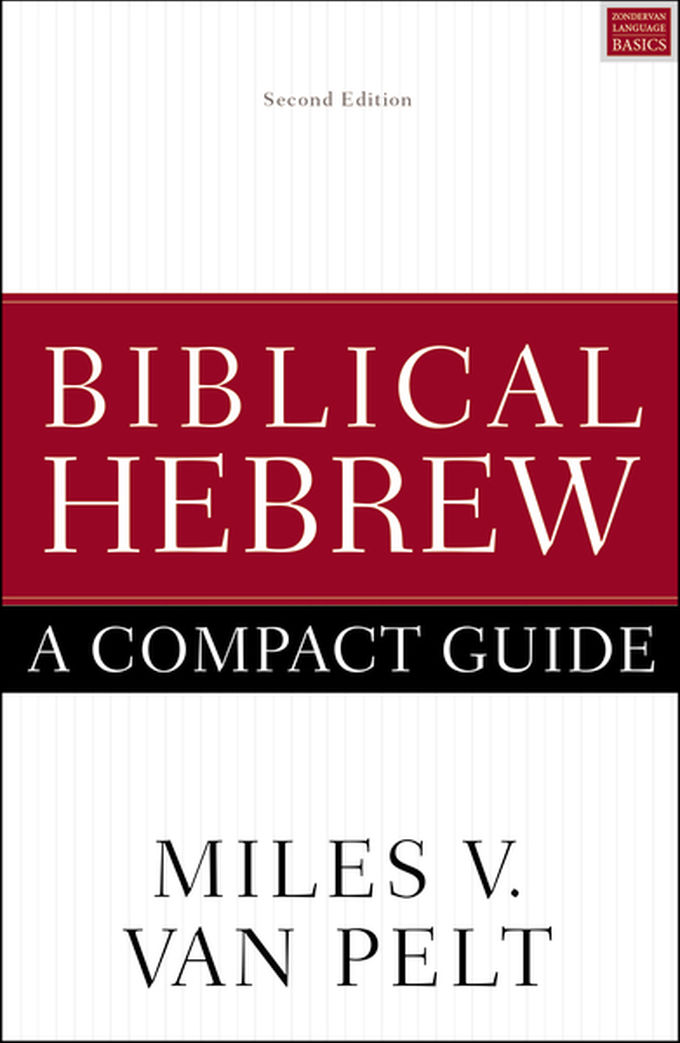Following their updated editions of Basics of Biblical Hebrew and Basics of Biblical Greek, Zondervan Academic has updated their compact guides to the language: Biblical Hebrew: A Compact Guide by Miles VanPelt and Biblical Greek: A Compact Guide by Bill Mounce. These slim, small books (each 4x6" and about 0.75" thick) are designed to be handy references for those with working knowledge of the biblical languages. They stand between a beginning teaching grammar and an intermediate/advanced reference grammar. Organizing their contents roughly according to their respective grammars, these compact guides make excellent companions when doing translations and exegesis.
Biblical Hebrew: A Compact Guide
The second edition of Biblical Hebrew: A Compact Guide is not much different from the first; it makes some minor spelling changes and adds a few sections. The most salient change is the expansion of the lexicon to include all words (excluding proper nouns) that occur over 10x in the Hebrew Bible. This makes the compact guide an easy reference grammar and lexicon in a portable, accessible book.
The descriptions and paradigms can be inundating (a weakness of his grammar as well), but in general, the information is useful for those who are discerning translation options for particular stems and forms. It may not be overwhelmingly helpful for the task of exegesis, but it can certainly provide some insights. VanPelt focuses on the morphology and syntax over the function of the language.
Biblical Greek: A Compact Guide
The second edition of Biblical Greek: A Compact Guide finds Bill Mounce also making few revisions to his previous edition. His book layout, however, is very attractive and makes it easy to find key information quickly. (VanPelt's layout, in contrast, appears more cluttered.) The further strength of Mounce's reference is a color-coded section with morphology charts—endless paradigms for the Greek student. He also includes a lexicon that includes parsings and declensions.
Mounce writes clearly and provides relevant examples from the Greek New Testament (whereas VanPelt sometimes appears to use made-up examples). It feels like a "cliff-notes" version of his comprehensive grammar. He does not discuss syntax at length (an emphasis of VanPelt's guide), which might be more useful for students using it for exegetical purposes.
Conclusion
For those who own the previous editions of these compact guides, I do not think that the revisions are worth upgrading. However, for those who have not purchased these, I consider the Zondervan Compact Guides to be a valuable accompaniment to their teaching grammars. They are particularly helpful for students beyond their introductory courses, who do not desire to lug out their giant textbooks to find one grammar point and dust off the cobwebs. They can easily be a one-stop resource for advanced students in translation, exegesis, and preaching. In short, Biblical Hebrew and Biblical Greek: A Compact Guide are invaluable resources for the library of the biblical scholar!
(My thanks is given to Zondervan for providing complimentary review copies in exchange for an honest review.)


Comments
Post a Comment